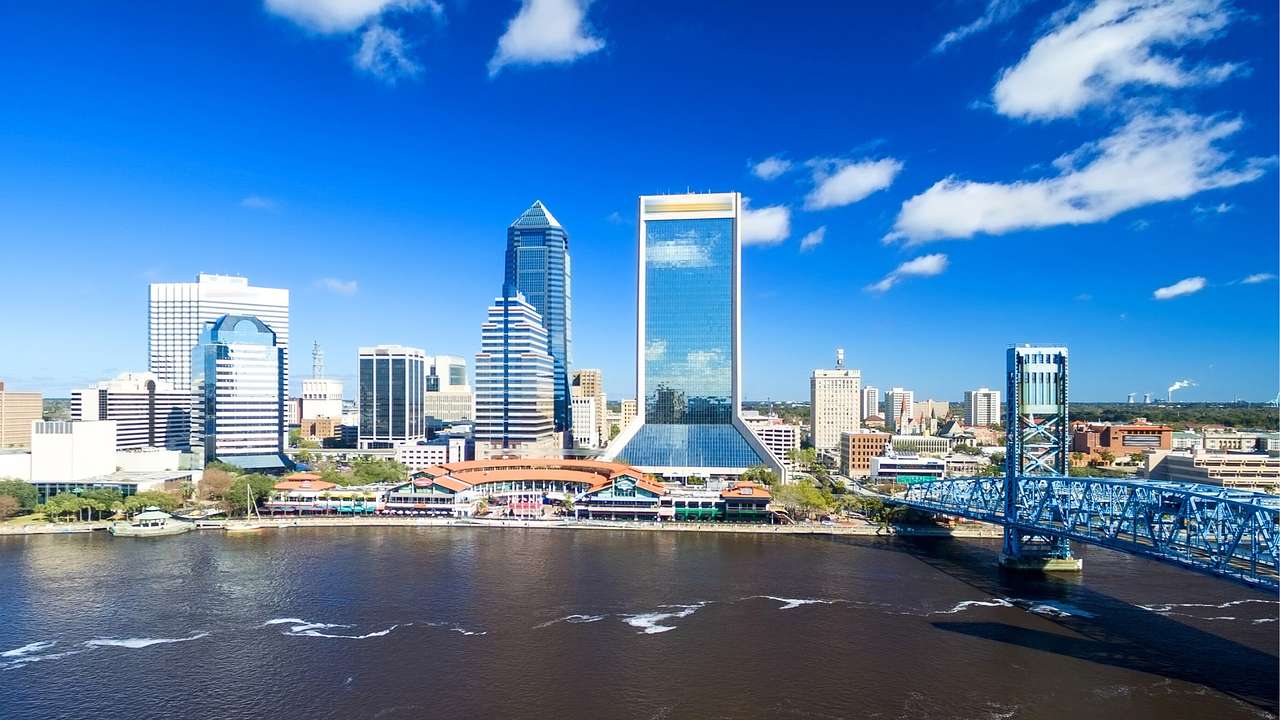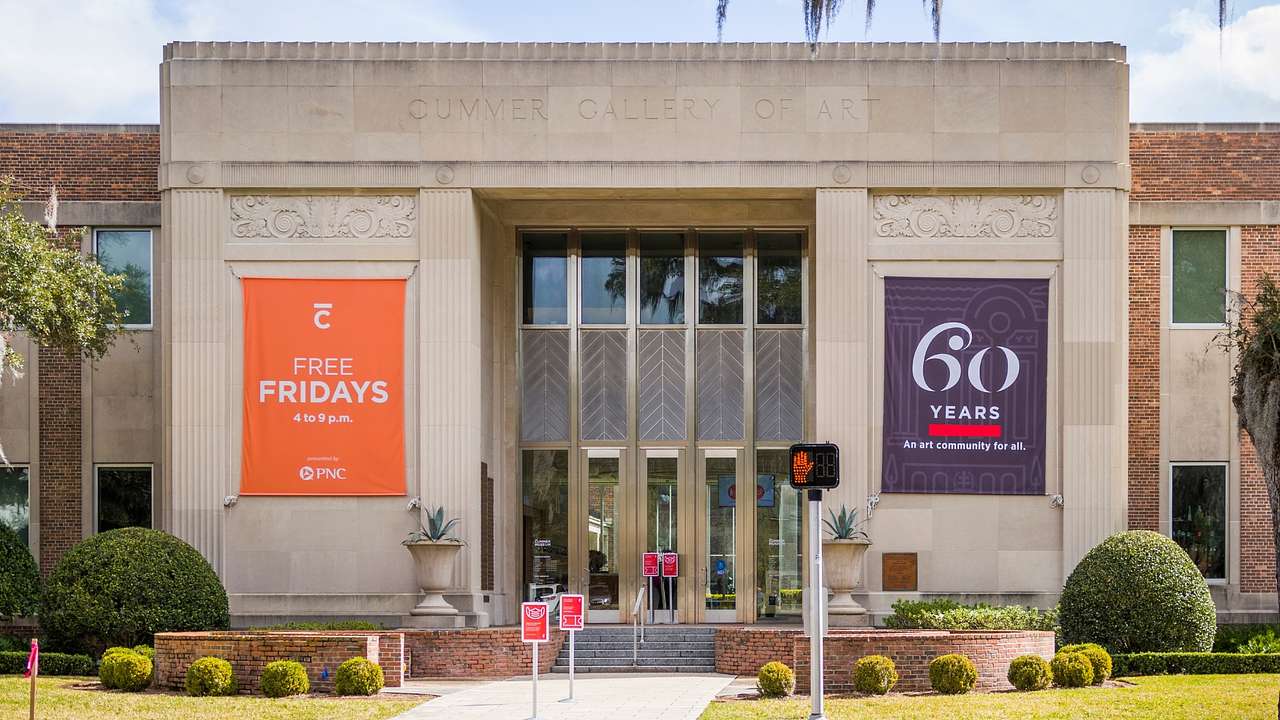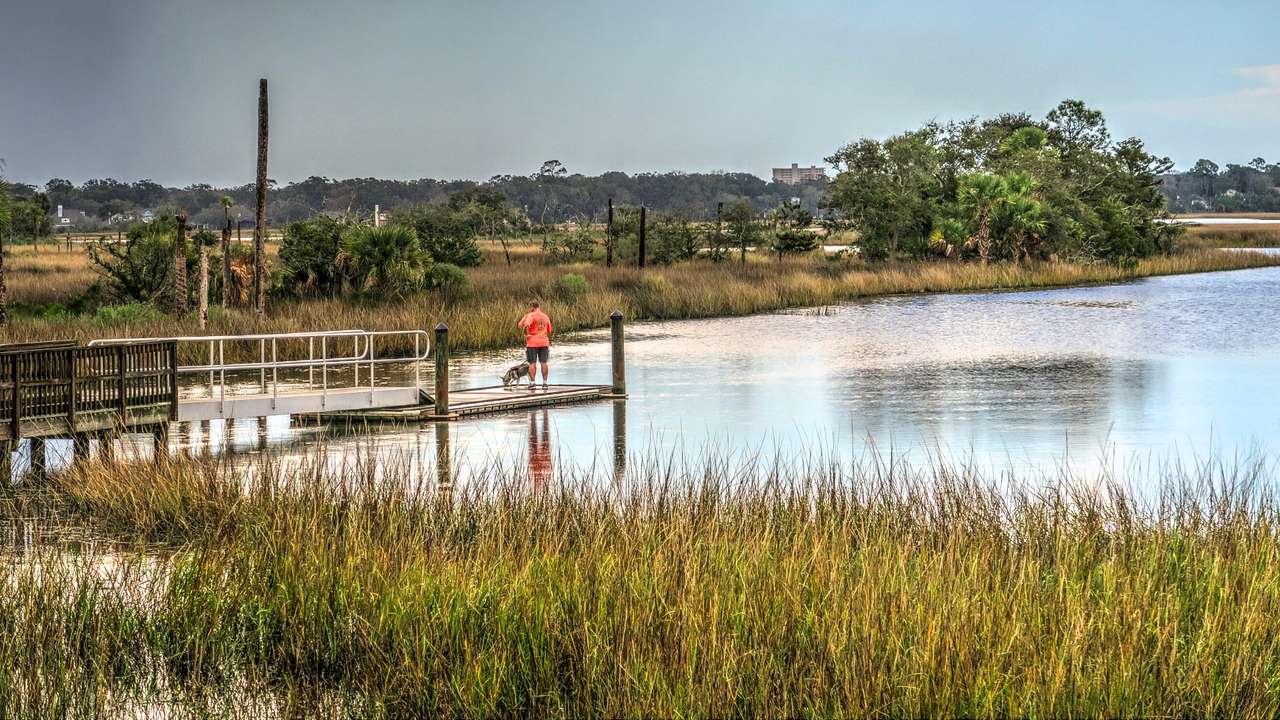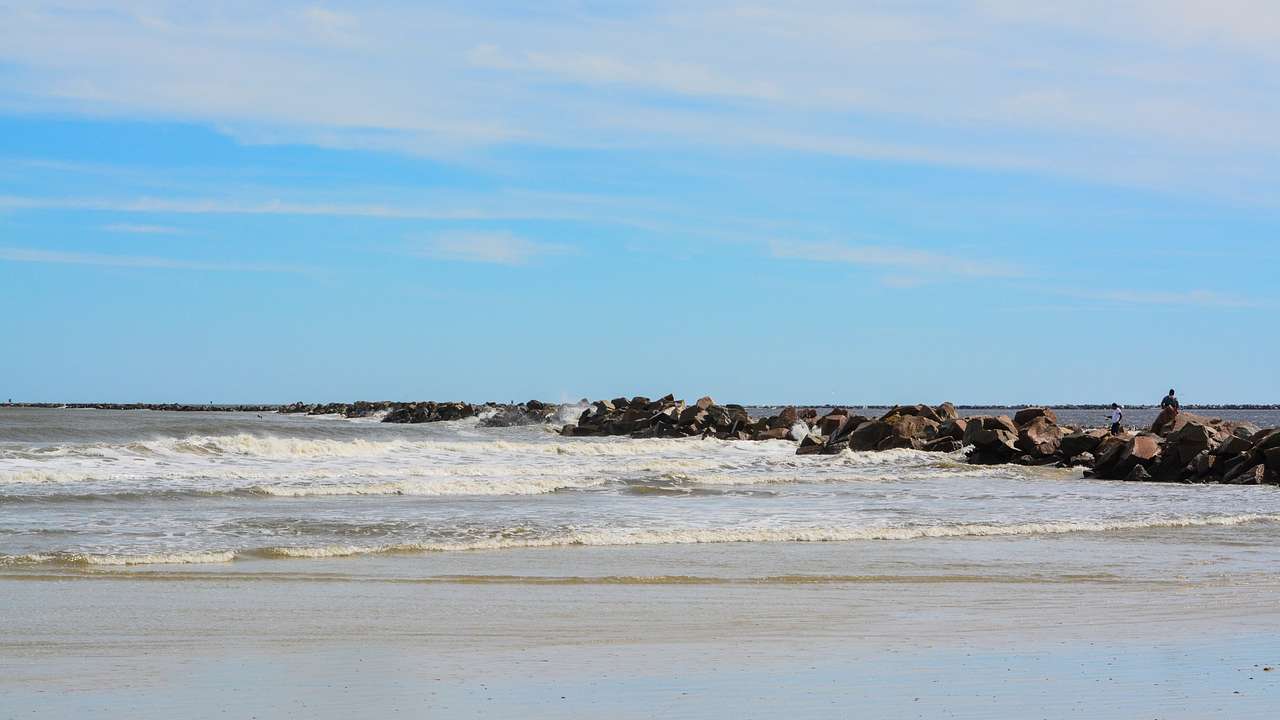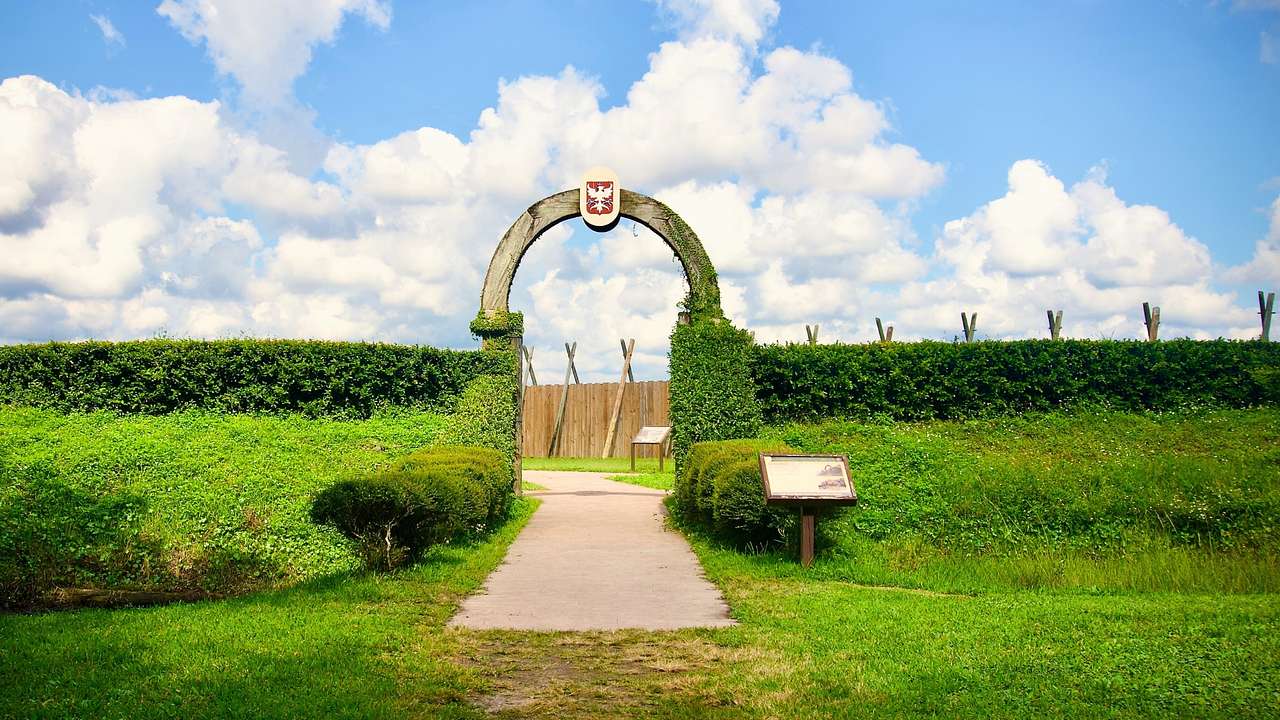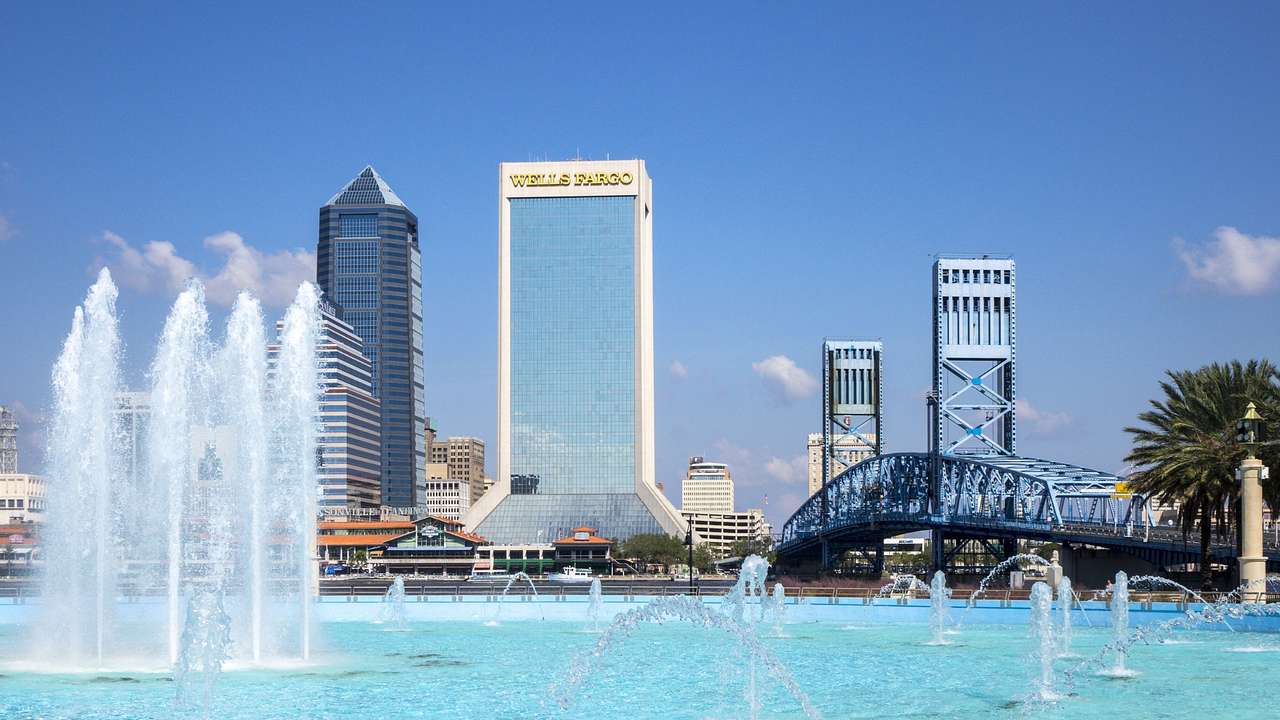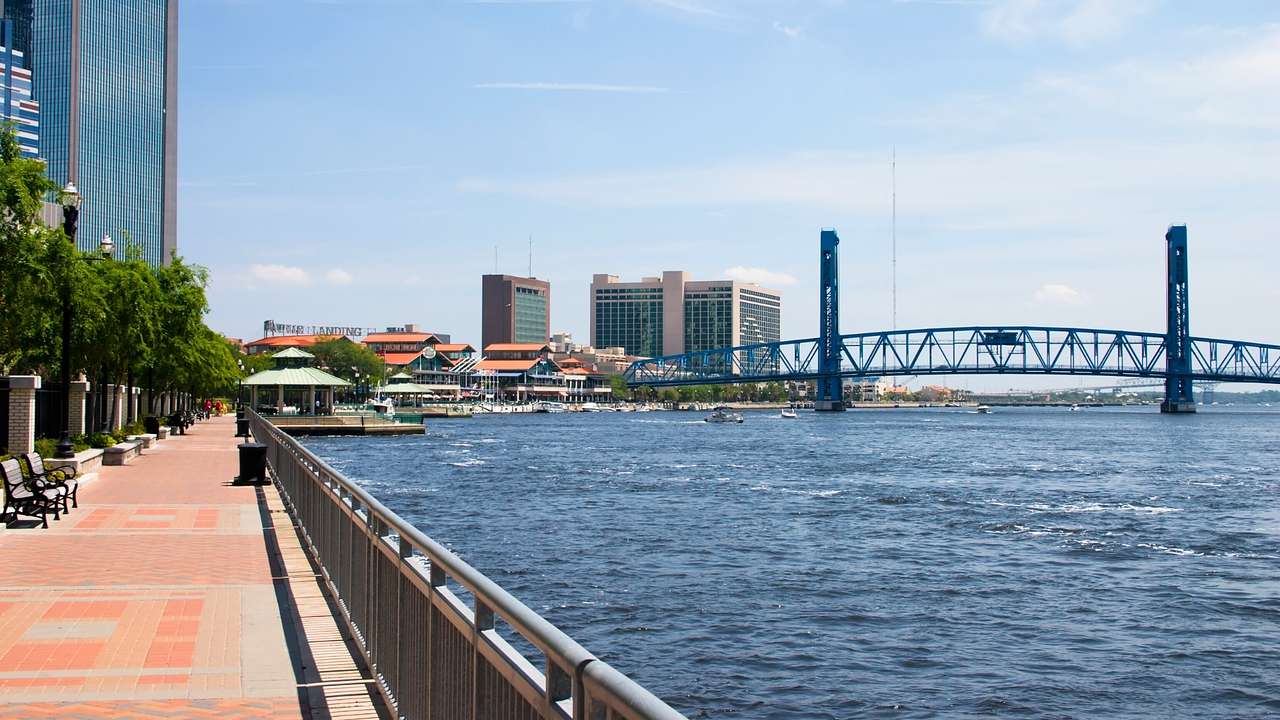20 Landmarks in Jacksonville, FL, to Visit
Destguides may receive commissions from purchases made through affiliate links in this article.

Located in northeastern Florida, Jacksonville is a unique city with more landmarks and attractions than you could imagine! When planning a trip to the most populous city in the state, it may be challenging to decide what to see first. That's where this list of landmarks in Jacksonville, Florida, comes in!
Just a few of the places of interest in the area include the 1920s Florida Theatre, the scenic Friendship Fountain, and the fascinating Fort Caroline National Memorial. For a more in-depth look at the landmarks found in Jacksonville, keep reading.
Planning a last-minute trip to Jacksonville?
To make the most of your visit to Jacksonville, we recommend you book entrance tickets and tours soon. Here are some top choices to make your trip enjoyable.
☂️ Top tours and experiences in Jacksonville
- Downtown Fernandina Historical Walking Tour (likely to sell out)
- Electric Bike Tours in Amelia Island (rated highly)
- 90 Minute Self-Guided Arcimoto FUV Adventure (rated highly)
- Amelia Island Guided Kayak Tour of Lofton Creek (rated highly)
- Best of the Beaches E-Bike Tour
20 Jacksonville, FL, Landmarks
- Cummer Museum of Art & Gardens
- Camp Milton Historic Preserve
- Castaway Island Preserve
- Florida Theatre
- St. Johns River
- Little Talbot Island State Park
- Huguenot Memorial Park
- James Weldon Johnson Park
- Fort Caroline National Memorial
- Ribault Monument
- Fort George Island Cultural State Park
- Museum of Contemporary Art, Jacksonville
- Kathryn Abbey Hanna Park
- Maple Leaf Shipwreck
- Friendship Fountain
- Yellow Bluff Fort Historic State Park
- The Catty Shack Ranch Wildlife Sanctuary
- Timucuan Ecological and Historical Preserve
- Southbank Riverwalk
- Springfield Historic District
Jacksonville Landmarks Video
Check out our highlights video of Jacksonville landmarks.
Jacksonville Landmarks Map
A map of Jacksonville landmarks. Use the map to explore all of the points of interest.
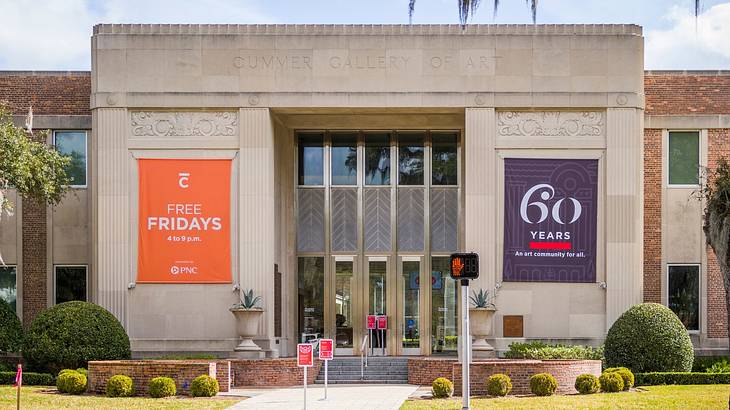
Cummer Museum of Art & Gardens
The Cummer Museum of Art & Gardens were given to the city by Ninah Cummer after her death. This landmark opened to the public in 1961 and was added to the National Register of Historic Places in 2010.
Today, you can see the stunning art collection of around 6,000 pieces. After exploring the galleries, make sure to wander through the perfectly manicured gardens. If you visit on a Saturday, you can also go to the Riverside Arts Market, located about a two-minute walk from the museum.
Camp Milton Historic Preserve
Formerly a Civil War military encampment, Camp Milton Historic Preserve is now a popular hiking spot. As you follow trails, you'll come across some plaques covering the history of the site. Notably, many of the trees here are over 150 years old and would have stood in the area when the military camp was used in 1864.

Castaway Island Preserve
Castaway Island Preserve is an undeveloped wetland preserve with an intricate salt marsh ecosystem. Visitors can admire some of this preserve by following scenic trails. During a hike, you'll also see wildlife, like many types of birds, and the wetlands can be explored even more by kayak.
While the preserve is nice all year, the best time to visit Jacksonville to go to this natural landmark is during April. The weather is warm but not overly humid, and the rainy season hasn't begun yet, offering the perfect climate for wandering around the outdoor attraction.
Florida Theatre
The Florida Theatre is a beloved Jacksonville landmark that opened in 1927. The Mediterranean Revival building in Downtown Jacksonville is another of the sites in the city on the National Register of Historic Places, having been added in 1982.
Interestingly, Jacksonville's nickname used to be the Winter Film Capital of the World due to the many movies filmed in the city during the colder months. However, the industry moved away, and the Florida Theatre is now one of just four 1920s high-style movie palaces remaining in the state. Luckily, visitors can still enjoy performances here, including comedy shows, concerts, and dance productions.

St. Johns River
One of the fun facts about Florida relating to its natural landmarks is that the St. Johns River is the longest in the state. The Saint Johns River flows for 310 miles and passes through Jacksonville.
You can see it from many places in the city, including from downtown. The source of the river is St. Johns Marsh in Vero Beach. It runs through eight cities and into the Atlantic Ocean.
Little Talbot Island State Park
As one of only a few remaining undeveloped barrier islands in Northeast Florida, Little Talbot Island State Park is a must-see natural landmark. The island covers 2,500 acres and is a popular place to hike or bike while admiring over five miles of pristine shoreline.
Other activities enjoyed here include shelling, surfing, and kayaking. You can camp overnight as well.

Huguenot Memorial Park
Huguenot Memorial Park is a scenic coastal attraction with the Saint John River on one side and Fort George Inlet on the other. At the park, you can follow trails that offer fantastic views, share a picnic, and even camp overnight, with around 70 campsite spots available.
This natural landmark also has some historical background. It was a landing place of the French Huguenots in 1562, and you can see a historic marker relating to this event as you explore the outdoor area.
James Weldon Johnson Park
Formerly named Hemming Park, James Weldon Johnson Park is the oldest park in the city. It opened as a village green in 1857 and now acts as a meeting place, events space, and tranquil urban escape from the bustle of the rest of Downtown Jacksonville.
Whether you visit to attend an event or want a place to go for a walk or sit and chat surrounded by nature, James Weldon Johnson Park is the place to be!
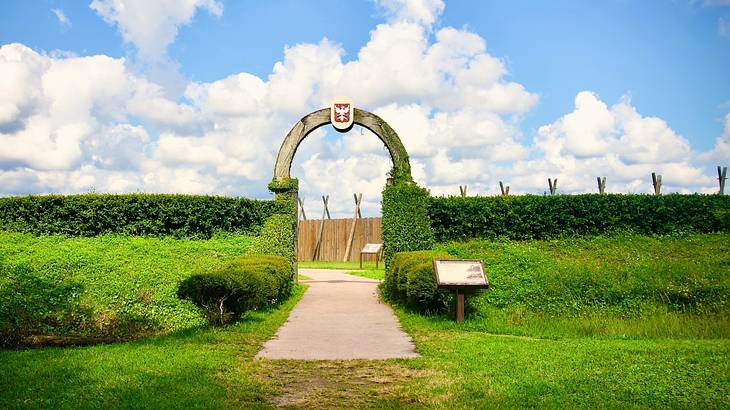
Fort Caroline National Memorial
Fort Caroline National Memorial within the Timucuan Ecological and Historical Preserve is another of the interesting historical places in Jacksonville, FL. Located on the banks of the Saint John River, the landmark is the site of an attempted French colonial settlement from 1564. However, the area was quickly taken over by the Spanish, who occupied it until 1569.
During a visit, you can find information about the site's history. You can also go to the Kingsley Plantation and learn more about the people who were sadly enslaved there by Zephaniah Kingsley Jr. The National Parks Service manages all sites here.
Ribault Monument
The Ribault Monument is located in Fort Caroline National Park. It sits atop St. Johns Bluff, and those that go to see it will also get to admire a stunning view of the Saint John River. You can even see the Atlantic Ocean if the weather is clear.
The monument itself commemorates the landing of John Ribault in 1562. Its design features a column with a coat of arms.

Fort George Island Cultural State Park
Another of the outdoor landmarks to visit in Jacksonville is Fort George Island Cultural State Park. As the name suggests, the landmark sits on Fort George Island and is surrounded by inlets and waterways created by water flowing from the Atlantic Ocean and Saint John River.
During a visit, you can hike and bike along trails, enjoy watersports, and spot wildlife. You can also learn about the area's extensive history at the Fort George Island Visitor Center and the Ribault Clubhouse, which is a National Historic Landmark.
Museum of Contemporary Art, Jacksonville
If you're looking for more arts and cultural landmarks, you'll be interested in the Museum of Contemporary Art, Jacksonville. Often called MOCA Jacksonville for short, the gallery opened in 2003 and houses an array of modern artworks.
There are lots of fantastic temporary exhibitions on display as well. You can also find educational classes and exhibits here, including many aimed at getting children interested in the arts.
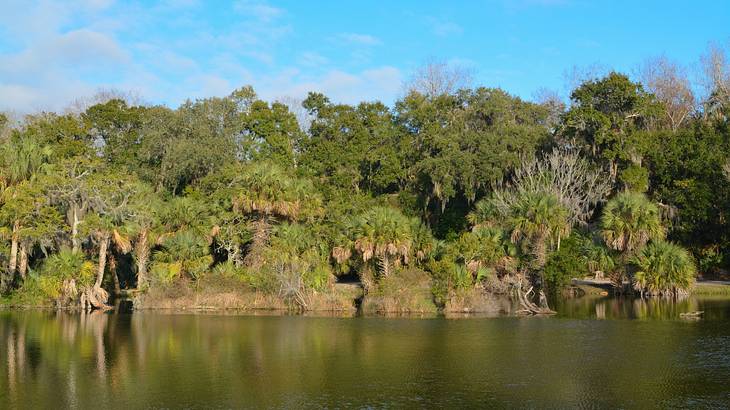
Kathryn Abbey Hanna Park
As you may have started noticing, there are many excellent outdoor attractions in the city! Another of the top Jacksonville, Florida, landmarks that allows you to take in the fresh air is Kathryn Abbey Hanna Park.
The 447-acre public beach and park sits right on the Atlantic Ocean and is a popular spot for watersports. You can also hike and will spot an array of wildlife native to Florida.
Interestingly, the park was Florida's first beach community for African Americans during segregation. At that time, it was called Manhattan Beach.
Maple Leaf Shipwreck
The Maple Leaf Shipwreck is one more of the Jacksonville historical sites to see when in the city. This Florida landmark is the wreckage of a paddle steamer that was used to transport Union troops during the Civil War.
It sank in 1864 after hitting a mine placed in the Saint John River by the Confederate Army. The wreck remains in the river today and is one of the most important Civil War shipwrecks to be found. It's also a National Historic Landmark.
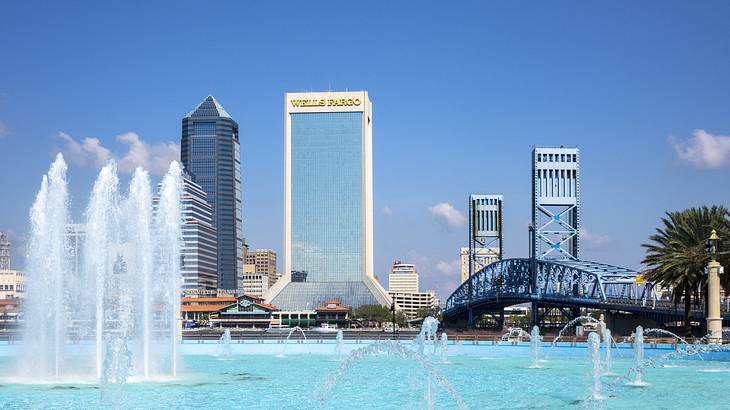
Friendship Fountain
The beautiful Friendship Fountain sits along the Southbank Riverwalk located downtown. When it opened in the 1960s, the fountain was one of the largest and tallest in the world.
While that title was taken in the decades following, Friendship Fountain remains one of the most popular tourist attractions in Jacksonville.
Yellow Bluff Fort Historic State Park
Yellow Bluff Fort Historic State Park is another Jacksonville park related to the Civil War. It was constructed in 1862 as an encampment for soldiers and was, interestingly, inhabited by both Union and Confederate troops.
The site remained in use until the end of the Civil War. It was added to the National Register of Historic Places over 100 years later, in 1970.

The Catty Shack Ranch Wildlife Sanctuary
One of the more unique places to visit in Jacksonville is The Catty Shack Ranch Wildlife Sanctuary. This rescue sanctuary is home to big cats that have been rescued from serious and unsafe situations. Unfortunately, the cats can't be released, so they now have a safe space at the Catty Shack Ranch.
During a visit, you can see the big cats, and all proceeds go to their upkeep and care. Cats to see include tigers, leopards, and lions. Rescue horses, coatimundis, and foxes also live at the sanctuary.
Timucuan Ecological and Historical Preserve
Covering 46,000 acres, the Timucuan Ecological and Historical Preserve is a vast natural landmark. The park was established in 1988 and features wetlands and habitats for an array of creatures.
This is also where the Fort Caroline National Memorial and Little Talbot Island State Park are located. You can additionally learn more about the area's ecology at the Timucuan Preserve Visitor Center.

Southbank Riverwalk
The Southbank Riverwalk opened in the 1980s and is where you'll find the Friendship Fountain. Stretching for 1.25 miles, the downtown promenade also offers scenic views of the Saint Johns River and is a perfect place to watch the sunset.
Visitors can walk or jog along the walkway or relax on one of many benches and take in the vistas. There's also a kayak launch along the Southbank Riverwalk if you want to hop on the water.
Springfield Historic District
The Springfield Historic District was established in 1869, making it the oldest neighborhood in the city. At the time, it was home to Jacksonville's wealthiest residents, including famous silent movie stars.
These days, you can stroll around the district, admiring the restored 19th-century and early 20th-century mansions. You'll also come across unique shops and trendy restaurants, bars, and breweries.
In Conclusion
There's no shortage of cultural and historical sites in Jacksonville, FL, as well as fantastic outdoor spaces. This list should have given you an idea of how many places there are to see in this Florida city; there's really something for everyone!
To see even more great landmarks and attractions, you could also visit Jacksonville Beach, a coastal resort city located about 30 minutes from Jacksonville.
Want to keep exploring?
Subscribe for discounts on tickets and hotels and our latest guides.
Thank you for subscribing
We will be in touch soon with discounts on tickets and hotels and our latest guides.
Want to keep exploring?
Subscribe for discounts on tickets and hotels and our latest guides.
Thank you for subscribing
We will be in touch soon with discounts on tickets and hotels and our latest guides.

